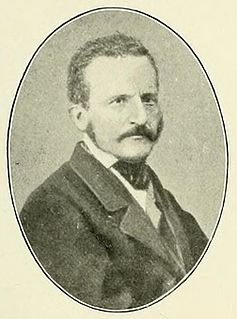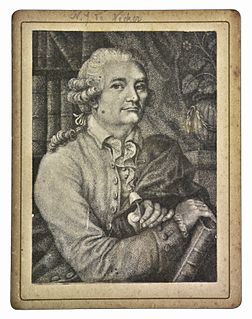Johan Ångström (24 September 1813, Lögdö, Medelpad – 19 January 1879, Örnsköldsvik) was a Swedish physician and bryologist.

Medelpad is a historical province or landskap in the north of Sweden. It borders Hälsingland, Härjedalen, Jämtland, Ångermanland and the Gulf of Bothnia.

Örnsköldsvik[œɳɧœldsˈviːk] is a locality and the seat of Örnsköldsvik Municipality in Västernorrland County, Sweden, with 32,953 inhabitants in 2017.
He obtained his education in Uppsala, and later practiced medicine in the communities of Lycksele and Örnsköldsvik. [1] With Fredrik Nylander (1820-1880), he conducted botanical investigations in Lapland, Finland and Karelia. [2]

Uppsala is the capital of Uppsala County and the fourth-largest city in Sweden, after Stockholm, Gothenburg, and Malmö. It had 168,096 inhabitants in 2017.

Lycksele is a locality and the seat of Lycksele Municipality in Västerbotten County, province of Lapland, Sweden with 8,513 inhabitants in 2010.

Lapland, also referred to as Lappi Province, is the largest and northernmost region of Finland. The municipalities in the region cooperate in a Regional Council. Lapland borders the region of North Ostrobothnia in the south. It also borders the Gulf of Bothnia, Norrbotten County in Sweden, Finnmark County and Troms County in Norway, and Murmansk Oblast and the Republic of Karelia in Russia. Lapland's cold and wintry climate, coupled with the relative abundance of conifer trees such as pines and spruces means that it has become associated with Christmas in some countries, most notably the United Kingdom, and holidays to Lapland are common towards the end of the year. Rovaniemi Airport is the third busiest airport in Finland.
The moss genus Aongstroemia ( Bruch & Schimp., 1846) in named in his honor. [3] As a taxonomist, he was the binomial authority of several plants within the genus Botrychium . [4]

Mosses are small flowerless plants that typically grow in dense green clumps or mats, often in damp or shady locations. The individual plants are usually composed of simple leaves that are generally only one cell thick, attached to a stem that may be branched or unbranched and has only a limited role in conducting water and nutrients. Although some species have conducting tissues, these are generally poorly developed and structurally different from similar tissue found in vascular plants. Mosses do not have seeds and after fertilisation develop sporophytes with unbranched stalks topped with single capsules containing spores. They are typically 0.2–10 cm (0.1–3.9 in) tall, though some species are much larger. Dawsonia, the tallest moss in the world, can grow to 50 cm (20 in) in height.
Philipp Bruch was a German pharmacist and bryologist born in Zweibrücken. His father, Johann Christian Bruch was also a pharmacist.

Wilhelm Philippe Schimper was a French botanist born in Dossenheim-sur-Zinsel, Bas-Rhin, a town near the river Rhine in Alsace. He was the father of botanist Andreas Franz Wilhelm Schimper (1856-1901), and a cousin to naturalist Karl Friedrich Schimper (1803-1867) and botanist Georg Heinrich Wilhelm Schimper (1804-1878).









